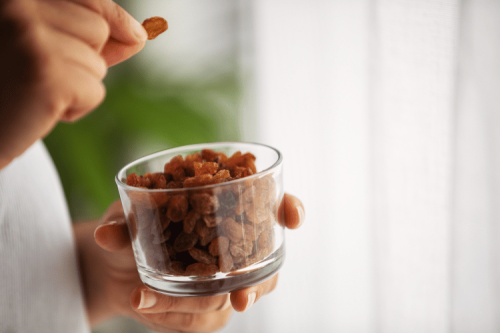
The primary objective of this blog is to offer basic understanding in relation to the worry of parents and guardians on one issue – safety of their toddler, in this case, the use of jello, and how dangerous it may be. In order to prevent young children from suffering during feeding times, it is vital to comprehend what a choking hazard is. In the course of this article, we will discuss how closed this risk could be, regarding use of some products, even those which are not considered to be dangerous, for example, jello. Real-life examples of healthy snack alternatives that are safe for toddlers, parents and caregivers should also know what such choking hazards are and how to prevent young children from encountering them will be covered. Come with us as we pursue such basic issues of childcare so as to assist you in making cancer free choices for your children.
When Can Babies Eat Jello?
Right Age to Start Feeding Jello
There is no exact age to give jello to kids but most of the pediatricians recommend waiting until the kids are between 1-2 years old. This is when children are prepared both orally and motor skill-wise to eat jiggly and soft textures. Before feeding jello to a toddler, it should be cut into small pieces to avoid any risk of choking. For their own protection, always watch what your toddler is doing while they eat.
Precautions to Taking Jello with Toddlers
When giving jello to babies, it should be fed in small bite-sized pieces so that it is easy for them to swallow or mixed with other foods like pureed fruit or yogurt which would be safer. Such strategies also reduce the chances of choking and JP of gelling are also reduced, which is more appropriate for toddlers. Supervision should also never be fallen from during feeding and parents should also train the kid to eat in a slow manner and perform complete mastication. Following these steps, jello will be a safe and fun snack for an infant.
Signs Your Baby is Ready for Jello
You may discover that your baby is ready for jello when your baby is able to sit on their own and has started eating other soft solid foods. You should check if he is capable of picking up small pieces of food with fingers, bites in a simple up-and down motion and swallows without needing help. Also, make sure that your baby has been introduced to different textures and is able to manipulate gellied substances. These signs may help you ascertain that your child is able to eat jello without the risk of choking.
Is Jello a Choking Hazard?
The Choking Risk in Relation to Jell-O
Usually, jello is regarded as a choking hazard particularly for babies and young children. They tend to find difficulty while trying to manage the slippery texture; nevertheless, the jello must be broken into small and digestible pieces to avoid dishing it out alone. Alternatively, it may be combined with other foods, for instance, pureed fruits to make it easier to handle. A parent or a guardian can also prevent the risk of choking associated with jello by making sure that children take time when eating and are supervised closely during mealtimes.
Jello and the Causes of Choking in Babies
Jello can lead to choking in babies for a number of reasons; jelly has gelatinous and slippery properties that can be very hard for a child to grasp inside of their mouth much less control. Jello consists of large pieces and these very large pieces can lodge themselves in the throat when they have not been chewed adequately and can therefore pose a choking risk. Strategies such as cutting jello into small pieces or watching your baby during meals can help alleviate the risk of this happening.
Strategies to Avoid Choking During a Baby’s Jello Eating Moment
When babies eat jello, it is prudent to avoid the possibility of choking by ensuring that the jello is cut into very small pieces not larger than a quarter of an inch. Other soft foods can also be introduced with jello in order to change its consistency. Apart from cutting the jello into small pieces for a baby, never forget to watch my baby when he eats; make him take smaller bites and chew before swallowing. If followed, these measures can substantially lower the chances of a choking hazard related to jello even further.
Are There Benefits to Giving Babies Jello?
Nutritional Value of Jello for Babies
Babies do not benefit nutritionally from jello since it is composed mostly of sugars, gelatin and flavoring and coloring agents. It has no vitamins and minerals that are essential for a developing baby. Nonetheless, if jello is prepared with fruit juices or purees, it can provide some nutritional value, including vitamin C and other nutrients contained in the fruit used. Jello may be offered, but only in small amounts and not as the primary source of nutrition.
Jello as a Sensory Play Option for Babies
For babies, Jello could be considered a sensory play option that is both interesting and safe in terms of exploring cosmos of texture and color. The jelly like substance has the potential of providing a tactile sensation towards an infant thus helping in the sensory development of a child. Also, engaging in jello during play can enhance gross motor development as children engage themselves in pincer grasp of the jello which is essentially soft and jiggly. It should be always noted that jello could be problematic if misused, but if it is used properly and consistent with the rules, then it can be a lot of fun to use.
Alternatives to Jello for Toddlers
Fresh fruit can be served instead of jello for their sweetness and nutrients in a healthier approach. Yogurt is another option which provides calcium and probiotics good for the digestive system. Alternatively, for an amusing option, chia seed puddings, which comprise chia seeds mixed with milk and left for one night, have an interesting texture like that of jello and are rich in omega-3 fatty acids.
How to Safely Serve Jello to Babies?
Homemade Jello: How Does It Compare with Store-Jello
The choice between home-made and commercially manufactured jello for babies almost always rests on the latter being more advisable. This is because it takes away the worry about what goes into a jello that a baby would consume. For instance, knowing which jello flavor ingredients to mix will always be a decision in favor of natural fruit juice as opposed to artificial flavorings or colorings. This helps avoid unnecessary preservatives and offers extra nutrients from the fruit itself. That said, there is also the assurance that there will be no big or tough bits that are biggest risk in jello as a feeding option delivering it, so house jello sometimes also works better.
How to Carefully Supervise Babies while Eating Jello
When babies eat jello, it is important that they be kept upright and in arm’s reach at all times. Besides, babies should be offered jello in small, bite-sized pieces so that the risk of choking can be avoided. Always be on the lookout for the slightest change in behavior or any actions so as to prevent any scenarios that would constitute a risk.
Considerations When Providing Sugar Free Jello To Babies
Since babies are not supposed to be fed excessive sugars of any kind, providing them with sugar free jello can be a safer option. Always read the labels to avoid many artificial sweeteners that will also not be appropriate for the babies too. Where possible, nectar jello, or sweeteners that are organic should be used, and if in doubt as to what to settle on, speak with a peis). For optimal health of the baby, this is one of the best approaches to take in jello feeding.
What Are Alternatives to Jello for Toddlers?
Jello Alternatives that are Healthy and Gelatin-Free
If you are in search of healthier gelatin-free options for toddlers, you can try giving them fruit purees, yogurt, or chia pudding. These options allow toddlers to have a similar mouth feel to jello while providing nourishment without sugars or chemical compounds. Fresh fruit cut into fun shapes and served as finger food may also be a great and healthier alternative to jello.
Appropriately Considering Solid Foods for Babies
Babies modifying their diets that previously composed only liquids can handle pureed vegetables, toasted mashed avocado and soft cooked grains for oatmeal. These options are easily digested, highly nutritious, and have their texture adjusted to the right stage of growth of the infant. Offering such foods ensures a more diverse and healthy diet among toddlers as they will have tasted different foods from their infancy stage.
Introducing New Foods to Healthy Babies Safely
The introduction of new foods to babies should be done in a stepwise manner. During this phase, it is common to introduce a new food once a time and in very little quantities. This procedure also promotes the identification of any allergy or intolerance that the child may have. New mothers should first of all start with foods that contain only one ingredient and do not incorporate other new foods for several days while watching the baby for signs of an allergic reaction. Focus on age-appropriate foods that are appropriately soft or pureed and are dense in nutrients for proper growth. However, this is advised only after discussing with the pediatrician what is appropriate for the individual baby.
Reference sources
- Begin With Nutrition - "Can Babies Eat Jello? Best Age to Start Explained + Recipes"
- Parents Wonder - "Can Babies Eat Jello? 4 Considerations + DIY Recipes"
- NHS - "Foods to avoid giving babies and young children"
Frequently Asked Questions (FAQs)
Q: Is it ok for babies to have Jello as a treat?
A: Jello can be safely administered to babies, but only in moderation. It is critical that parents cut the jello into small working pieces to lower the chances of choking. Since jello usually contains food dyes as well as sugars, it would be wise to restrict the quantity that is taken.
Q: At what age can infants start having Jello?
A: It is ideal to first wait for your baby to get up to 6-9 months of age before recommending jello and it has to be noted that the jello being taken poses the least risk of choking.
Q: How safe is it to eat Jello in the form of sponges for toddlers and other smaller children?
A: The answer is yes. Jello is a common choking hazard, especially for young children, who often have difficulty chewing food into small enough pieces. It is important to supervise kids while they are eating it.
Q: Can babies safely use Jello as a toy?
A: Yes, babies can use jello, but care has to be taken when they are playing with it so as not to swallow too many large portions. These large portions represent a choking risk.
Q: Is Jello with the fruit viable for this age group toddlers especially?
A: Yes, Jello with fruit can be enjoyable for this age group of toddlers but the fruit needs to cut into tiny pieces to avoid any chances of the toddlers choking.
Q: What is the nutritional value of Jello for infants and growing babies.
A: Despite being attractive, Jello can hardly be considered a food item due to its lack of nutrition value and should not be part of an infant's meal. Babies require solid foods with more nutrition when they are growing up, therefore, Jello is not recommended, instead, other healthier options are suitable.
Q: At what age is it ok to Jello for older kids?
A: Jello is a safe food for Kids aged 6+, but due to high sugar content and the addition of harmful food coloring Jello should not be consumed in bulk amounts.
Q: What about toddlers in the case of a yogurt and Jello for toddlers?
A: Nibbles involving mixing yogurt with gelatin jupa can be great for kids, provided that the chunks are small enough for toddlers to avoid choking attempts on larger chunks.
Q: To what extend can Jello be used in case of infants.
A: Instead of Jello, Also, Mashed fruits or yogurt can be offered which are stable enough for babies and provide enough nutrition as well without the choking hazards posed by Jello.
Q: Why is it critical to prevent infants from consuming Jello?
A: Jello should be avoided in infants for various reasons. First, it contains some ingredients such as food dye which are unhealthy and are not nutritious for infants. The jelly also contains some textures that can be troublesome for infants with regard to choking.













 Login with Google
Login with Google Login with Facebook
Login with Facebook